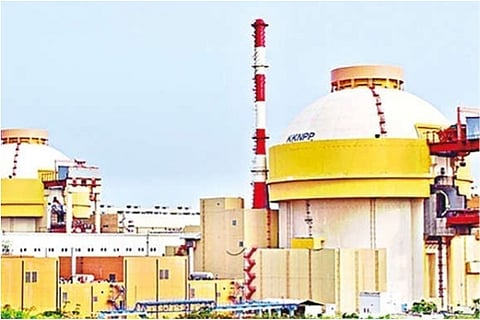

Chennai
He also said that the government is considering enhancing the capability of the Kudankulam Nuclear Power Plant in the near future from 2,000 MW to 6,000 MW.
Replying to a query by DMK MP TR Baalu in the Lok Sabha, the Minister said that the India Russia Inter-Governmental Agreement of 2010 facilitates storage and reprocessing of spent nuclear fuel of KKNPP in line with India’s closed fuel cycle policy.
“India has adopted “closed fuel cycle,” where spent nuclear fuel is regarded as a material resource. Given the very small quantity of high-level waste generated post reprocessing and technologies for separation, partitioning and burning of waste being developed by the country, there is no need for deep underground geological disposal facility in the near future,” he told the Parliament on Wednesday.
Baalu had asked whether it is a fact that the spent nuclear fuel of KKNPP is not being sent back to Russia by the Agreement signed with that Government. “If so, what were the reasons for it?” he questioned.
Dr Jitendra Singh also allayed fears expressed by the parties and activists over setting up of the away from reactor facility to store spent fuel within the Kudankulam plant itself. “The scheme of storage of spent (used) fuel in a nuclear power plant is two-fold. The first place of storing spent fuel is located within the reactor building/service building, generally known as the spent fuel storage pool/bay and the other is called the Away From Reactor (AFR) Spent Fuel Storage Facility, within the plant premises,” he said, adding that such facilities are designed with a comprehensive approach to safety to withstand extreme natural events like earthquakes and tsunamis with provisions of large operational safety margins for safe, sound and reliable performance.
“These are designed to ensure that there would be no adverse impact on plant personnel, general public or the environment. AFRs are also already constructed and functional at other nuclear plant sites like Tarapur in Maharashtra and Rawatbhata, Rajasthan,” he noted.
Visit news.dtnext.in to explore our interactive epaper!
Download the DT Next app for more exciting features!
Click here for iOS
Click here for Android